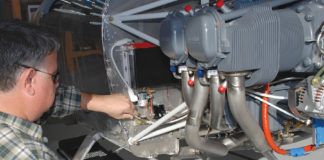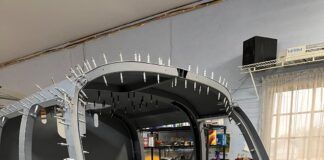Probably no other in-flight scenario gives pilots more concern than having an engine quit. Especially if there’s only one. The likelihood of having a sudden, catastrophic engine failure is rare, we like to think, but it does happen. Surviving a sudden propulsion stoppage can depend on planning and preparation.
Induced Failures
Right away, we need to talk about the induced failures that were caused by improper management, usually fuel starvation, and by deferred maintenance, such as ignoring signs of ill health. If the fuel system is properly designed and operated, and we don’t try to stretch the flight beyond the available endurance, we can probably eliminate more than half the engine-failure incidents. Several times a year, we learn of an airplane involved in an off-airport landing, and we always have to wonder—was there fuel in the tank? We’ve all been guilty of cutting it too close sometimes, which is nothing more than a lapse in basic airmanship. One of the PIC’s duties is to continually know the fuel state and plan accordingly. I once had to fly a Cessna 150 out of a rough wheat field because it had been parked there with dry tanks, all because the pilot “wished” the gas would last long enough to get him home; it didn’t.
Switching tanks at the first sign of an engine faltering is basic procedure; turn on the boost pump only after selecting a fresh tank. If you’ve run a tank dry, the pump will only put air in the line. Use boost after switching until the engine smooths out. Cessna pilots habitually leave the selector in “Both” position, but this is a bad idea when fuel is not plentiful. Using a single tank, alternatively, will maintain a reserve supply, and it also gives a fresh, unstirred tank to relieve vapor locking.
Carburetor ice has been around since the early open-cockpit days, but it still catches pilots by surprise, even though a carb-heat test is always on the pre-takeoff checklist. In actual experience, it sneaks up on us, building up gradually until the throttle is wide open and rpm is still falling. And when we belatedly pull the knob to “hot” and there’s not an immediate resurgence of power, we shove it back to “cold” and try something else. Wrong. Leave the carb heat on until it has time to work, and be prepared to adjust mixture to balance the lower density of the hot air. Expect some initial roughness as the melted ice goes through the engine.
Don’t fail to keep oil in the engine, and if you have an engine that’s using oil at non-typical rates, and the exhaust stack shows black, oily residue on the cowling, give the engine proper attention. If your engine no longer develops full static rpm within specs when the throttle is opened for takeoff, find out where the power loss is happening. Abnormal noises shouldn’t be ignored; a change in engine health requires investigation.
Be particularly attentive, and cautious, after the airplane’s been worked on. You, or the mechanic you hired, can have a bad day, overlooking some detail. My first engine-out landing resulted from a loose oil screen plug, which was to be torqued and safety-wired after the oil change, but wasn’t. I was only a low-time private pilot, but I heard the engine noise change slightly, and when I looked at the oil pressure gauge, it was on the low redline. Fortunately, I was still close to the departure airport, so I pulled the mixture and stopped the prop to save the engine and successfully glided back to a crosswind runway.
OK, you didn’t induce the failure, but the engine still failed. What then?
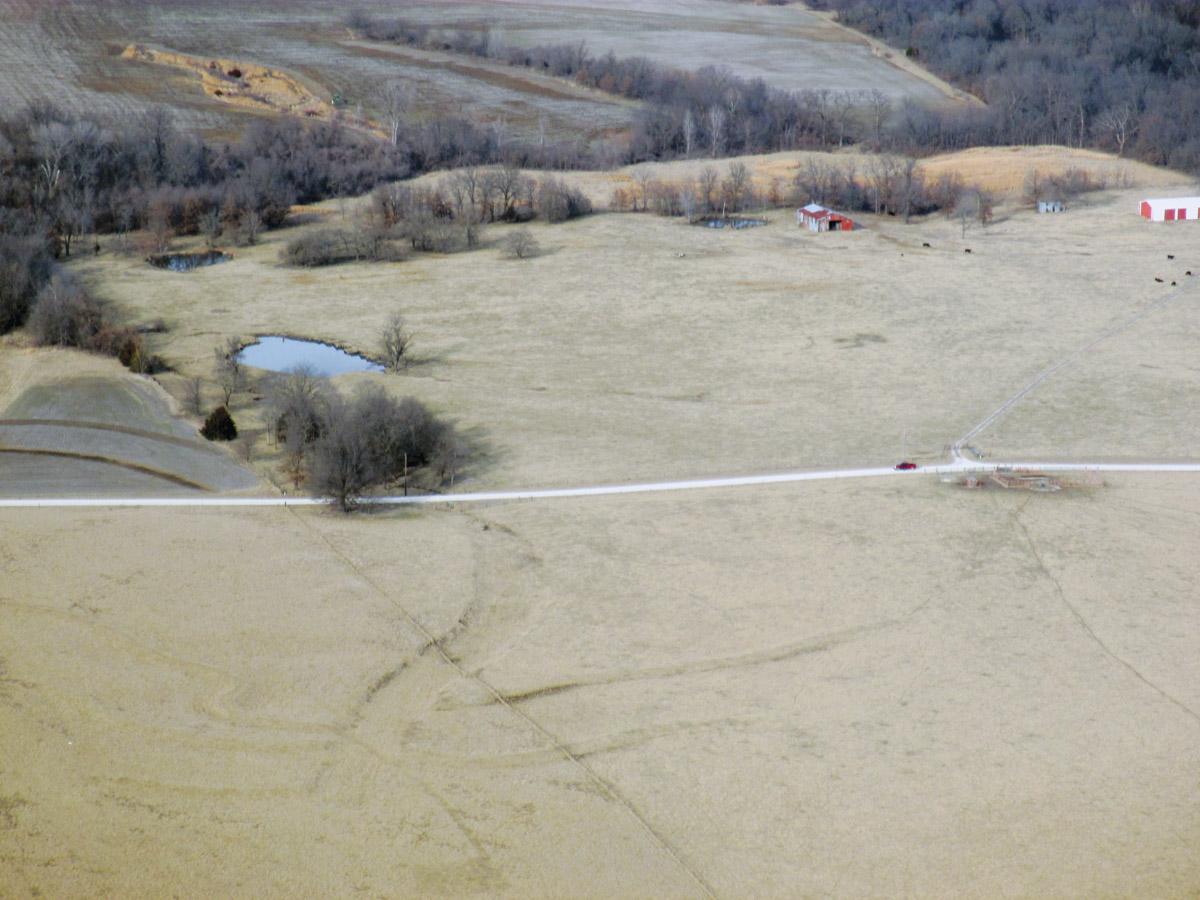
From above, it’s difficult to ascertain a pasture’s suitability for landing. It should be long, level, and oriented into the wind; land as softly and slowly as possible.
Hopefully, you have trained and prepared for this eventuality. When the engine quits, you will first hit a moment of denial—”Oh, this can’t be happening!” Yes, it can and it is. Then you encounter panic, which is counterproductive because it interferes with rational thinking. Training is the solution to the panic phase. Go to work, doing what you know needs to be done.
The first task is to maintain control of the aircraft; minimize altitude loss by immediately trimming to best glide speed, which you should know by heart. Avoid the stall, yet don’t let airspeed build up with the nose down, wasting the energy you have stored underneath you.
Second, check around the area for your best landing site. There’s no point in gliding away from the only good spot within reach. You should already know the wind direction as a well-informed pilot; plan to establish a downwind leg beside your landing site at an altitude sufficient to make a turn into the wind for the touchdown.
Third, do an in-cockpit drill to alleviate the engine problem if you haven’t done that automatically while taking care of the first two priorities. Engines need fuel, ignition and air to run; change tanks, turn on the boost pump, adjust mixture, pull on carb heat, switch mag positions, whatever you have available in your aircraft. Don’t pursue troubleshooting while you lose control of the landing process, however.
Next, emergency communication duties require prioritizing. If you’re already in contact with ATC, let them know your situation and solicit their help, if they are able to provide vectors to airports or terrain orientation. Don’t waste valuable time and attention on the radio if landing is imminent. Turn the radio off if it’s a distraction.
Finally, brief passengers in a calm manner: “We are going to land because of engine trouble; have your belt and harness tight. Expect some rough bounces, but we’ll be all right.” Be prepared to follow the recommendations in your emergency procedures checklist as it applies to cutting switches and unlatching doors prior to impact.
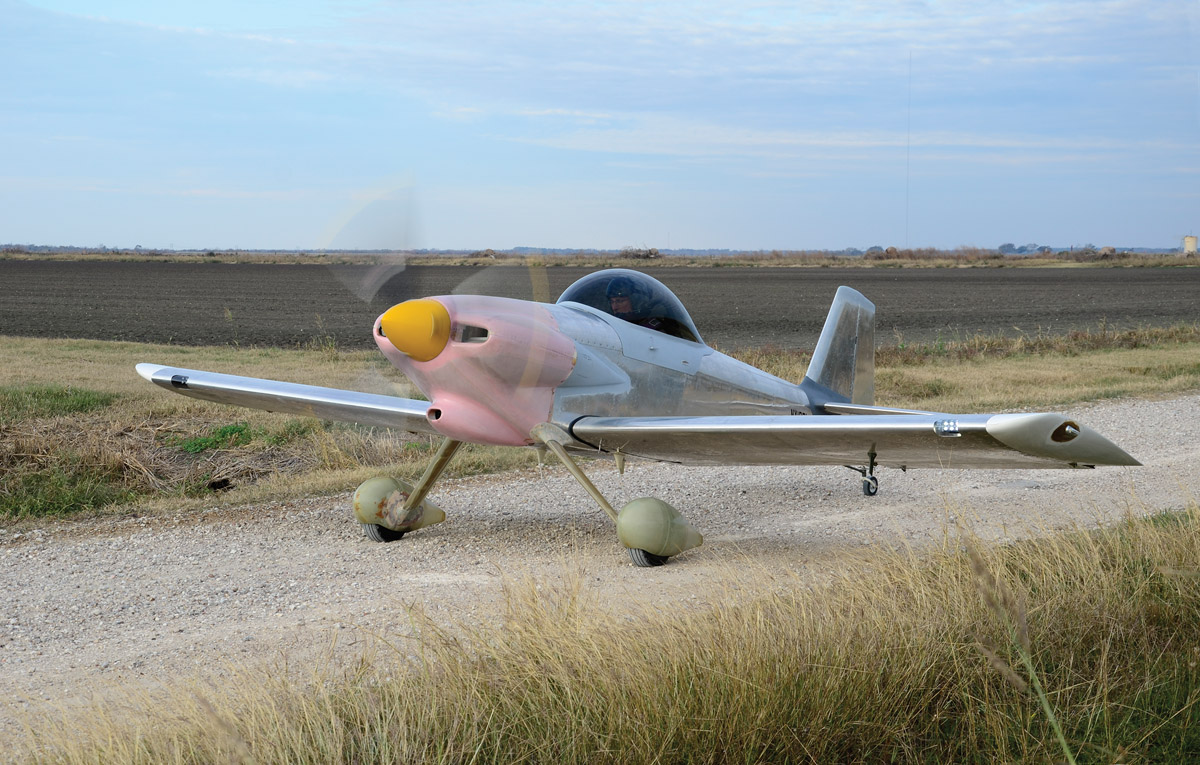
If you are fortunate enough to have an off-airport landing that ends on a deserted road that is adequate for a subsequent takeoff, do so carefully, and only after solving the problem that put you there.
No Two Alike
I’ve had various emergency landing scenarios over the years; dealing with each one required a different procedure, so be prepared to make the best of whatever happens. In one instance, a connecting rod failed right after takeoff. The prop stopped instantly, there was 200 feet of altitude to work with, thus there was little decision-making involved. I simply dead-sticked to a landing spot straight ahead.
In another example, the engine began vibrating severely at about 3000 feet agl in cruise. There was time to turn toward a nearby airport, do some exploratory troubleshooting while slowing in level flight, and plan for a forced landing under partial power, crossing several landing spots before eventually reaching the airport. One cylinder had broken a base hold-down stud.
These two situations required entirely different responses. Unlike typical training scenarios, engines don’t always stop completely and suddenly. The propeller will continue to windmill unless the engine comes apart internally. Vibration is to be expected if partial power is still being developed in some cylinders. The amount of altitude you have available determines the radius of action you can explore and the time you’ll have before committing to a landing spot. You must work with what you have.
In a lot of cases, the engine doesn’t fail completely, and that means you’ll have decisions to make. If it’s still making power, how much thrust is it making, and will it sustain level flight? Remember, there’s no guarantee a partially running engine will keep going long enough to reach an airport. Have alternatives picked out. Can you cure the problem? Keep track of which mixture or throttle setting brought the best response.
Head directly toward an airport if there’s one near, but don’t overestimate your gliding ability, particularly into a headwind. When you’re down to the last 1000 feet, have your mind made up; turn into the wind, choose the best option, and land as softly as you can.
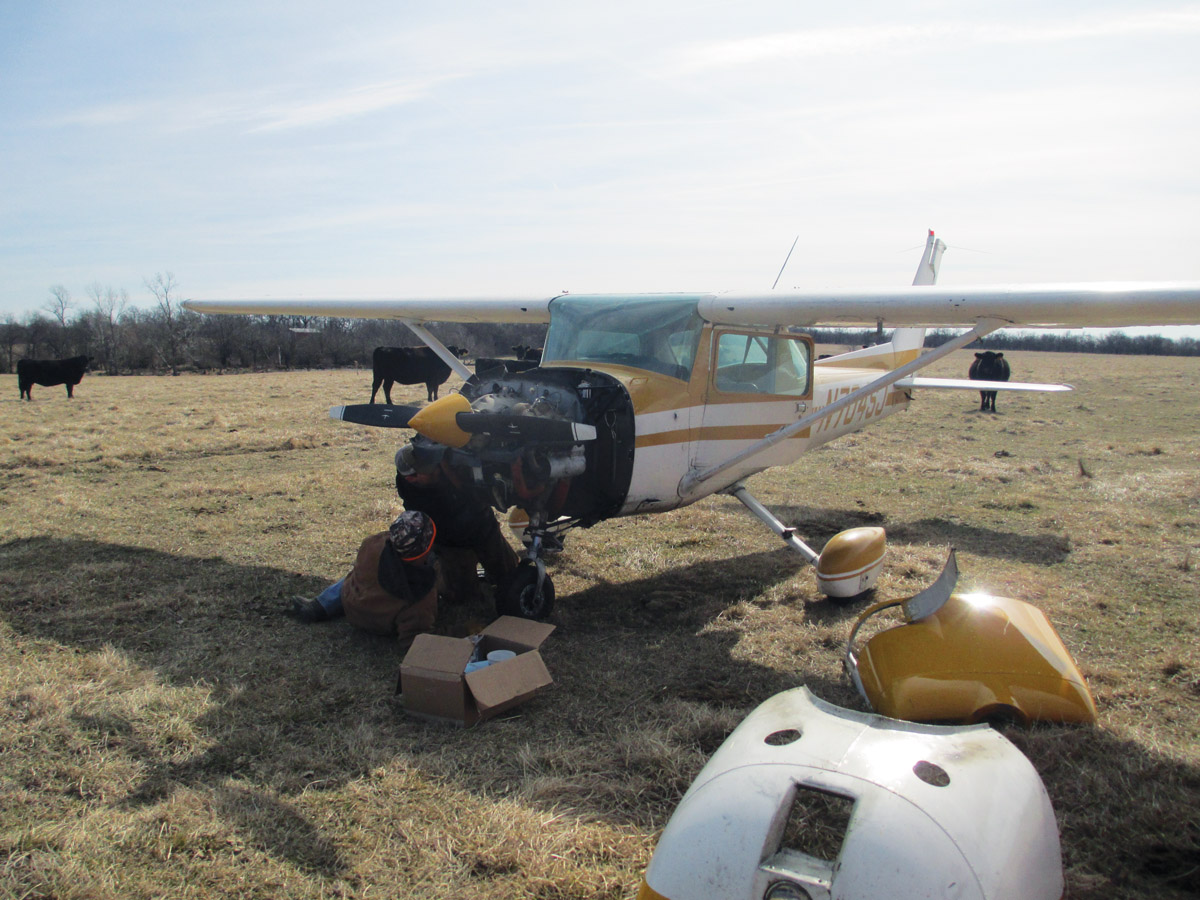
Once the airplane is safely on the ground, it’s time to find the source of the engine failure. As a by-product of the field’s rough surface, the battery cable loosened and the landing-light wire disconnected.
Pulling It Off
Let’s face it; there’s luck involved in any off-airport landing. My grandson learned in fifth grade the other day that only one-eighth of the world’s surface is farmland. The rest is oceans, forests, mountains, deserts, and cities. Even the best-looking pasture can have a ditch or gopher colony you can’t see until it’s too late. You will have to use the biggest, softest thing you can find; it may be nothing better than a parking lot, golf course, roadway, or beach.
If the one-and-only engine quits, there is a very finite amount of time and altitude with which to make a decision. The best possible option is an airport, any kind of airport, and if you’re sitting at two miles above the earth, you may be able to reach a runway ten miles or more away, particularly if running downwind. Lots of altitude also brings the complication of having lots of choices, versus a low-level failure that leaves you pretty much in a position to land on whatever’s right beside you. Make up your mind, and don’t vacillate without good reason.
Do the best you can with what you have available. Buildings and trees have to be avoided. Roads, while tempting, carry the risk of obstructions like wires, signs, and mailbox posts. Busy highways have traffic to contend with, which may not be flowing into the wind like you’d prefer to land. In western ranch country, vacant rural roads may be perfect. Landing near a highway is a good choice, so someone could possibly come by to check on an airplane that’s visibly out of place. Crop fields will result in some damage, but can offer ample survivable space in which to put the aircraft down. A nice tempting pasture may harbor ditches and burrows; avoid terraced fields if possible, and land parallel to the terraces if there’s no better choice. As one old-timer told me, “A planted field is a better bet, because if that pasture was a nice piece of ground, it would have been plowed up.”
Don’t worry about preservation of the airplane; your task is to protect its occupants. The wrecked plane will belong to the insurance company, so sacrifice it to land softly and decelerate progressively, avoiding a sudden stop to minimize injury. Separation of the landing gear, wings, tail, and engine compartment are energy absorbing events that can help you ride through the smash. The important thing is to fly as far into the crash as you possibly can, never abandoning what control you still have.
If in a retractable, should the gear be left up or put down? My reasoning is, gear up if landing on water, gear down if landing on the ground. The frangible gear is worth shedding in rough terrain, so put it down, along with the flaps. If you have presence of mind, cut the master switch and turn off the fuel before the landing. Reduce speed at touchdown as much as possible; that factor, plus a tightened harness, is the single most important ingredient in a survivable crash.
What to Do After the Stop
Whew, we’re down. Now what? Take stock of the situation and act accordingly. Check for injuries among the occupants and tend to their needs. Fire is the first concern, requiring immediate evacuation in an upwind direction. If the plane is upright and relatively undamaged, egress normally and assemble the group; don’t go back to retrieve belongings until you’re sure there’s no danger. If the airplane flipped inverted, be careful to brace when releasing seat belts or you may suffer injury from dropping to the ceiling.
Once out of the plane, settle your nerves and go about taking care of things. Shut off the fuel and turn off switches, but first check for ELT activation. If you don’t need assistance, turn the ELT off so it won’t activate during retrieval of the aircraft. Remove valuables and whatever you need for survival. If in a remote area, stay with the aircraft, which may be your best shelter for now.
Now to seek help. Perhaps people are already gathering; guard your statements to keep from incriminating yourself on the evening news (“looks like I ran out of gas”). Law enforcement and first responders love to have something unusual to take care of like an airplane crash. Let them work, but give them guidance. Insurance-wise, you have a duty to preserve the wreckage, and the NTSB also needs to be informed before it’s moved. Under Part 830 of its regulations, it’s the NTSB that has investigative responsibility, so you have to notify that agency if the forced landing qualifies as an accident. The FAA, on the other hand, may be delegated responsibility for the investigation, particularly if there are no fatalities. Remember that the FAA is also in the enforcement business; cooperate cautiously.
If nobody’s around, you’ll have to decide how to proceed. If you were talking with anyone before the event, or you were on a flight plan, a search will be starting shortly. See if you have cell phone service, which greatly reassures and simplifies, but do you know exactly where you are? A GPS will let you tell people your location, but not always how to get to you. After my last off-airport forced landing, I was sitting beside a rural gravel road, but there was no traffic on it and I walked 3.5 miles, knocking on many unoccupied doors before I could find someone home in the middle of the day. Fortunately, it was mild weather, and I was in shape for the trek. The point is, fly in clothing suitable for the country you’re flying over.
We like to think our airplanes are dependable, and we spend considerable effort to keep them that way. Nevertheless, a forced landing can happen, as I can attest from experience. Look at the area under you once in a while, and consider where you would put the aircraft down if the engine quit. As in all flying, if the unthinkable does happen, take command of the situation, work the problem, and don’t give up until the dust settles. J











